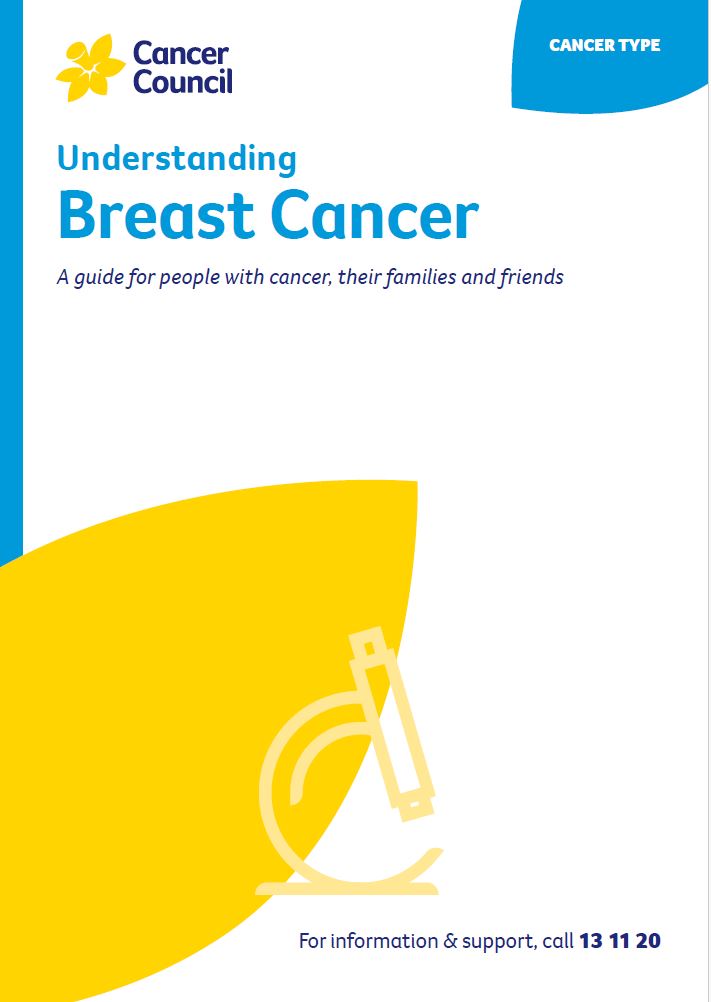- Home
- Breast cancer
- Treatment
- Surgery
- Removing lymph nodes
Removing lymph nodes
We discuss why and how lymph nodes are removed during breast cancer surgery to check for cancer spread.
Learn more about:
- Overview
- Sentinel lymph node biopsy (SLNB)
- Axillary lymph node dissection (ALND)
- Side effects
- Finding the sentinel nodes
Overview
Cancer cells that spread from the breast usually first spread to the axillary lymph nodes, which are in and around the armpit. Removing some or all of these lymph nodes helps your doctor to check for any cancer spread. The operation to remove lymph nodes is called axillary surgery. It is usually done during breast surgery but may be done in a separate operation.
There are 2 main types of axillary surgery – sentinel lymph node biopsy (SLNB) and axillary lymph node dissection (ALND).
Sentinel lymph node biopsy (SLNB)
When breast cancer spreads outside the breast, it first goes to a particular lymph node or nodes in the armpit or near the breastbone (sternum). These are called the sentinel nodes. A sentinel node biopsy finds and removes them so they can be tested for cancer cells.
If there are no cancer cells in the sentinel nodes, no more lymph nodes are removed. If there is more than a small amount of disease in the sentinel nodes, you may have axillary lymph node dissection or radiation therapy.
Axillary lymph node dissection (ALND)
If cancer is found in the lymph nodes, then most or all of the axillary lymph nodes (usually 10–25) may be removed to reduce the risk of the cancer coming back (recurrence) in the armpit. The nodes are tested and the results guide what other treatment may be needed. ALND is also called axillary lymph node clearance (AC). Radiation therapy may be used instead of ALND.
Side effects
You may have arm or shoulder stiffness, weakness and pain; numbness in the arm, shoulder, armpit and parts of the chest; fluid collecting near the surgical scar (seroma); lymphoedema; and cording. Side effects are usually worse after ALND than after an SLNB because more lymph nodes are removed in an ALND.
Finding the sentinel nodes
To work out which lymph nodes are sentinel nodes, one or a combination of these procedures is used:
 | Lymphatic mappingA small amount of a harmless radioactive solution is injectedinto the skin over the breast cancer tumour. A CT scan is then taken to show which lymph nodes the radioactive solution flows to first. These are most likely to be the sentinel nodes. Lymphatic mapping is done either the day before or on the day of the surgery. |
 | Dye injection (not always used)If dye is being used, it will be injected into the breast. The dye, which may be blue or green, moves into the lymphatic vessels and stains the sentinel nodes first. This is done under general anaesthetic during the surgery.Because of the dye, you may notice blue-green urine (wee) and bowel movements (poo) when you go to the toilet the next day. You may also have a blue patch on the breast for weeks or longer. Your skin may look a bit grey but will fade once the dye washes out in your urine. |
 | Handheld probeAs well as looking at where the dye travels to first (if used), the surgeon uses a small handheld device called a probe during the surgery to detect the radioactive solution injected during the lymphatic mapping.This helps to check that the sentinel nodes have been located and the surgeon can then remove them for testing. |
For more on this, see our general section on Surgery.
→ READ MORE: What to expect after breast surgery
Podcast: Making Treatment Decisions
Listen to more episodes from our podcast for people affected by cancer
More resources
Dr Diana Adams, Medical Oncologist, Macarthur Cancer Therapy Centre, NSW; Prof Bruce Mann, Specialist Breast Surgeon and Director, Breast Cancer Services, The Royal Melbourne and The Royal Women’s Hospitals, VIC; Dr Shagun Aggarwal, Specialist Plastic and Reconstructive Surgeon, Prince of Wales, Sydney Children’s and Royal Hospital for Women, NSW; Andrea Concannon, consumer; Jenny Gilchrist, Nurse Practitioner Breast Oncology, Macquarie University Hospital, NSW; Monica Graham, 13 11 20 Consultant, Cancer Council WA; Natasha Keir, Nurse Practitioner Breast Oncology, GenesisCare, QLD; Dr Bronwyn Kennedy, Breast Physician, Chris O’Brien Lifehouse and Westmead Breast Cancer Institute, NSW; Lisa Montgomery, consumer; A/Prof Sanjay Warrier, Specialist Breast Surgeon, Chris O’Brien Lifehouse, NSW; Dr Janice Yeh, Radiation Oncologist, Peter MacCallum Cancer Centre, VIC.
View the Cancer Council NSW editorial policy.
View all publications or call 13 11 20 for free printed copies.

